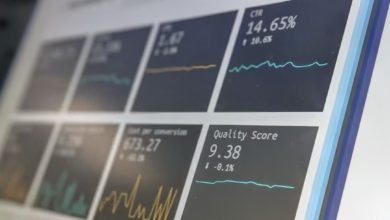Mastering Futures Trading: A Comprehensive Guide to Strategies, Risk Management, and Market Navigation

Futures trading has emerged as a pivotal strategy for investors looking to leverage the timely delivery of assets at a predetermined price. As a branch of derivatives trading, futures contracts play a significant role in various markets, including commodities trading, stock trading, and even crypto trading. This comprehensive guide will delve into the intricacies of futures trading, offering insights into essential concepts such as risk management and trading psychology.
In this article, we will explore key strategies for success in futures trading, focusing on both technical and fundamental analysis techniques that can empower traders to make informed decisions. Additionally, we will navigate the futures market by comparing it with other trading strategies, such as forex trading and options trading, highlighting the unique advantages and risks associated with each approach. Whether you're interested in day trading, swing trading, or even high-frequency trading, understanding the dynamics of futures trading can enhance your overall market analysis and trading strategies. Join us as we unpack the essentials of futures trading and equip you with the knowledge needed to thrive in today’s competitive trading landscape.
- 1. Understanding Futures Trading: A Comprehensive Guide to Derivatives and Risk Management
- 2. Key Strategies for Success in Futures Trading: Technical and Fundamental Analysis Techniques
- 3. Navigating the Futures Market: Comparing Futures Trading with Other Trading Strategies like Forex and Options Trading
1. Understanding Futures Trading: A Comprehensive Guide to Derivatives and Risk Management
Futures trading is a vital component of the financial markets, allowing traders to speculate on the future price movements of various assets. It involves entering contracts that obligate the buyer to purchase, and the seller to sell, an asset at a predetermined price on a specified date in the future. Understanding the mechanics of futures trading is essential for anyone interested in derivatives trading, as it offers unique opportunities and requires effective risk management strategies.
At its core, futures trading is closely linked to commodities trading, where traders can engage in contracts for assets like oil, gold, and agricultural products. However, futures contracts are not limited to physical goods; they also encompass financial instruments, including indices and currencies used in forex trading. This versatility makes futures trading appealing to a broad range of traders, from those engaged in day trading and swing trading to more specialized forms like high-frequency trading and algorithmic trading.
One of the primary advantages of futures trading is the ability to use leverage. Traders can control a larger position with a smaller amount of capital, which can amplify potential profits. However, this also increases risk, necessitating a solid understanding of risk management techniques. Effective trading strategies must include both technical analysis and fundamental analysis to assess market conditions accurately. Additionally, trading psychology plays a crucial role, as emotional discipline is vital when navigating the often volatile futures markets.
Another aspect to consider in futures trading is the variety of online trading platforms available, which facilitate trading across multiple asset classes, including crypto trading and index trading. These platforms often provide tools for market analysis, enabling traders to implement strategies such as scalping, copy trading, or social trading. For those exploring derivatives trading, options trading can complement futures trading by providing additional strategies for hedging or speculating on market movements.
In summary, futures trading is a sophisticated form of trading that requires a comprehensive understanding of various factors, including market dynamics and risk management principles. Whether you are a novice trader or an experienced investor, mastering the nuances of futures trading can enhance your overall trading expertise and open new avenues for profit in the financial markets.
2. Key Strategies for Success in Futures Trading: Technical and Fundamental Analysis Techniques
In the world of futures trading, success hinges on the ability to effectively analyze market conditions and make informed decisions. Two key strategies that traders often employ are technical analysis and fundamental analysis. Both techniques serve as essential tools for navigating the complexities of the market, whether you are involved in stock trading, forex trading, or commodities trading.
Technical analysis focuses on historical price data and trading volume to forecast future price movements. Traders use various chart patterns, indicators, and tools such as moving averages and relative strength index (RSI) to identify trends and potential entry and exit points. This method is particularly useful for day trading and swing trading, where quick decisions based on market fluctuations can yield significant profits. By utilizing technical analysis, traders can develop a systematic approach to their trading strategies, enhancing their chances of success in a fast-paced environment such as high-frequency trading or scalping.
On the other hand, fundamental analysis delves into the underlying factors that influence asset prices. This approach involves evaluating economic indicators, industry trends, and company performance, making it critical for futures trading in various sectors, such as energy trading or index trading. For instance, a trader might analyze reports on oil supply and demand to gauge future prices of energy futures. Understanding fundamental factors allows traders to make informed predictions about market movements, which is essential for effective risk management and leverage trading.
Incorporating both technical and fundamental analysis techniques can significantly enhance a trader's market analysis capabilities. For instance, a trader might use technical analysis to pinpoint entry points and then apply fundamental analysis to confirm the trade's validity based on current economic conditions. This holistic approach not only improves trading strategies but also aligns with the principles of trading psychology, where understanding market behavior is crucial.
Moreover, as the trading landscape evolves with the rise of online trading platforms, traders have access to advanced tools that facilitate both technical and fundamental analysis. This integration of technology in trading strategies supports various forms of trading, including algorithmic trading and copy trading, allowing traders to automate their strategies or emulate more experienced traders' tactics.
By mastering both technical and fundamental analysis, traders can navigate the complexities of futures trading more effectively, adapting to market changes and enhancing their overall trading performance. Whether you engage in derivatives trading or explore options trading, these analytical techniques are vital for achieving success in the dynamic world of trading.
3. Navigating the Futures Market: Comparing Futures Trading with Other Trading Strategies like Forex and Options Trading
Navigating the futures market involves understanding how futures trading compares to other popular trading strategies, such as Forex and options trading. Each strategy has its unique characteristics, advantages, and risks.
Futures trading operates on contracts that obligate the buyer to purchase, and the seller to sell, an asset at a predetermined future date and price. This mechanism allows traders to speculate on the price movements of various assets, including commodities, indices, and even cryptocurrencies. One of the key benefits of futures trading is the ability to use leverage, allowing traders to control a larger position with a relatively small amount of capital. However, this also means that risk management is crucial, as losses can be amplified.
In contrast, Forex trading involves the exchange of currencies and is often characterized by its high liquidity and volatility. Forex traders typically engage in strategies such as day trading, swing trading, and scalping, aiming to profit from small price fluctuations. Unlike futures, Forex trading does not involve contracts for future delivery, making it more straightforward for those looking for immediate trades. However, it also requires a solid understanding of market analysis, whether through technical analysis or fundamental analysis, to succeed.
Options trading, on the other hand, allows traders to buy or sell the right, but not the obligation, to purchase an asset at a specific price before a certain date. This flexibility can provide various strategies, including hedging against potential losses in stock trading or commodities trading. Options can be less risky than futures trading since traders can limit their loss to the premium paid for the option. However, options trading can also be complex, and a deep understanding of trading psychology and market conditions is necessary to navigate effectively.
When comparing these strategies, it’s essential to consider factors like trading platforms, levels of risk, and personal trading goals. For instance, while futures and options trading are forms of derivatives trading that can involve significant leverage, Forex and stock trading may appeal more to those seeking lower-risk options. Furthermore, as the trading landscape evolves, strategies such as algorithmic trading and high-frequency trading are gaining popularity, allowing traders to leverage technology for market analysis and execution.
Ultimately, whether engaging in futures trading, Forex trading, or options trading, a well-rounded approach that includes risk management and a clear trading strategy is vital for success in today's dynamic trading environment.
In conclusion, futures trading offers a dynamic landscape for traders seeking to engage with various assets at a predetermined future date. As we have explored, understanding the fundamentals of derivatives trading and effective risk management are crucial for success in this field. By employing key trading strategies such as technical and fundamental analysis, traders can enhance their decision-making process and improve their chances of profitability.
When comparing futures trading with other trading strategies like forex trading, options trading, and commodities trading, it becomes evident that each approach has its unique advantages and challenges. Whether you are involved in day trading, swing trading, or even high-frequency trading, the principles of market analysis and trading psychology remain paramount.
Furthermore, the evolution of online trading platforms has made futures trading more accessible than ever, allowing traders to leverage margin trading and algorithmic trading strategies. With the right tools and knowledge, you can navigate the complexities of the futures market alongside other forms of trading, including crypto trading and index trading.
As you venture into the world of futures trading, remember to continuously refine your trading strategies, stay informed about market trends, and apply rigorous risk management practices. By doing so, you can position yourself for success in this exciting and ever-changing arena of financial trading.
References:
(Include your sources here)





